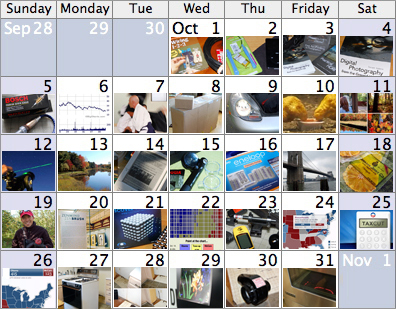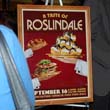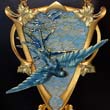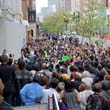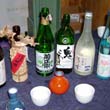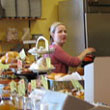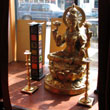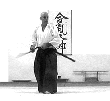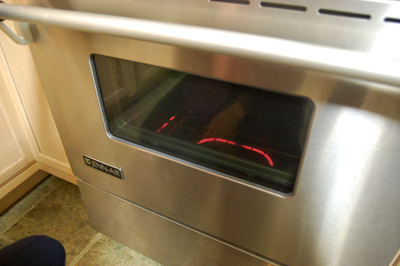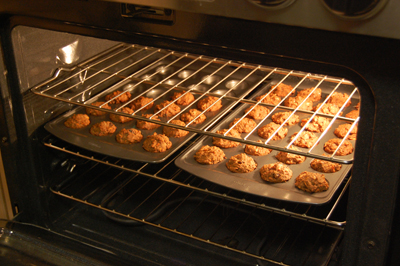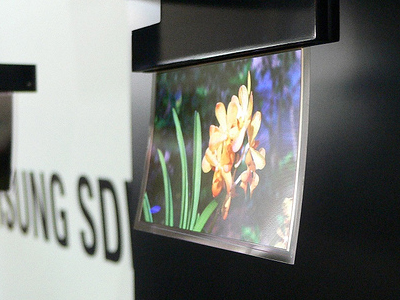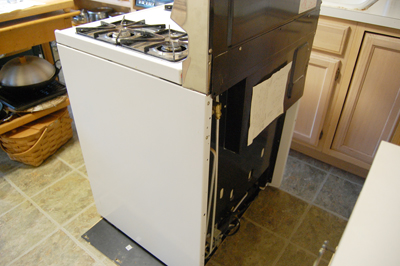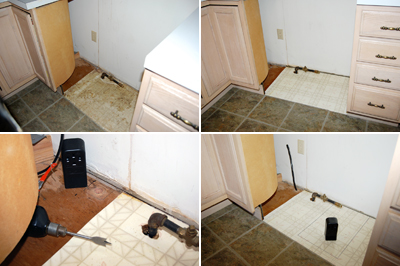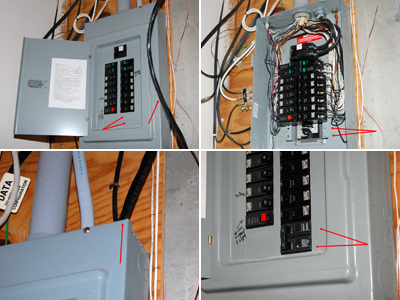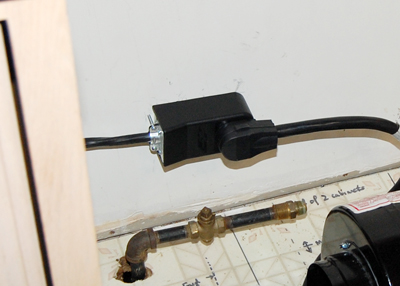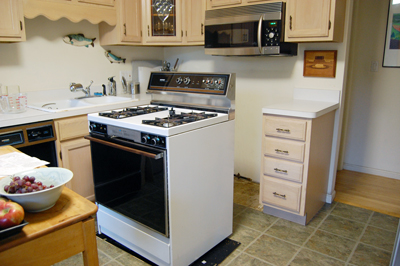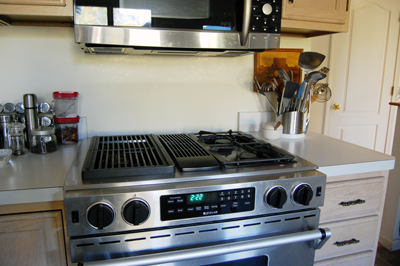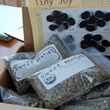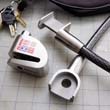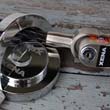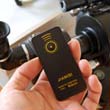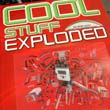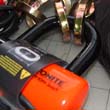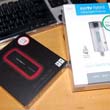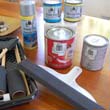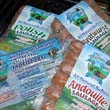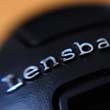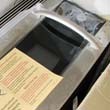The Jenn-Air range we installed has a grill on the left side. To keep the smoke from the grilling from overwhelming the kitchen, there is a downdraft vent in the middle of the range.
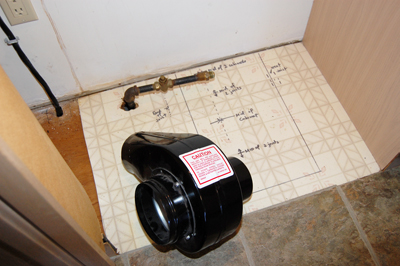
For the vent to work, a blower must be installed to suck the air down and out. This blower may be installed in a variety of ways. We chose to place it on the right side of the stove and vent the air down to the basement.

In order to vent the exhaust to the basement, a hole must be cut into the floor. The installation manual gave VERY explicit dimensions for the bounding box of where the blower may be placed.
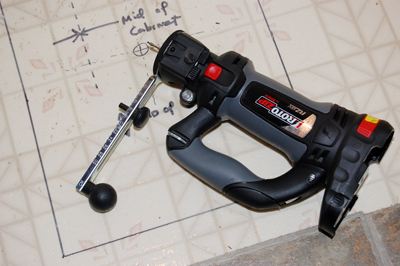
We spent quite a bit of time double checking our measurements before making the first cut. To make the cut, we used a RotoZip with a circle-cutting attachment. It was a LOT easier than using than a jigsaw. The RotoZip is quite an amazing piece of gear. We have had it for a few years and have always meant to do a more detail write-up on it.

Mounting the blower was more of a challenge, as we realized the mounting brackets were not among the various parts given to us by the seller. No matter, we came up with a pretty sturdy method using some 3" angle brackets. However, when we tried moving the stove in, we realized the blower was about 1/2" too high!

We reworked the mounting using some 2" L brackets and screwed everything down onto the floor. The blower felt very rigid and did not vibrate at all during our power-on test.
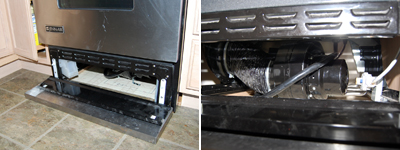
Once the gas line was hooked up and tested for leaks, we moved the stove into place. Everything fitted nicely underneath. The last step in this installation was to connect the vent outlet to the blower using the flexible hose. It took a little bit of crawling around but eventually we got it all attached and working. [Permalink] - Blower Installation
|

